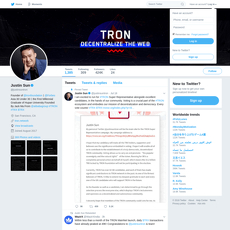ZBD Review
ZBD
x.com
ZBD Review Guide: Everything You Need to Know + FAQ
Does ZBD really pay you Bitcoin for playing mobile games and doing simple tasks? And are those “sats” actually spendable BTC you can cash out to your own wallet? If you’ve been burned by clunky “earn crypto” apps before, you’re right to be skeptical.
I’ve been watching Lightning apps closely for years and I’ve spent time testing ZBD so you don’t have to guess. Here’s the straight answer on what ZBD is, who it’s for, what to expect in your first week, and how to avoid the usual traps like hidden limits, KYC surprises, and region issues.
Why people get frustrated (and how to avoid it)
Most of the confusion comes down to expectations and jargon. Here’s what I see trip people up:
- Lightning vs “real Bitcoin”: People think Lightning sats aren’t “real.” They are. Sats are just tiny units of BTC sent over the Lightning Network. You can withdraw to your own Lightning wallet.
- Does it actually pay? Plenty of apps talk a big game, then ghost you at cashout. You want proof of payout, not promises.
- Onboarding headaches: New wallet, new terms, QR codes, invoices… it can feel like homework if the UX is bad.
- Time sinks: Low-value tasks that chew up your day for pennies in rewards.
- Limits and KYC: Withdrawal thresholds, regional restrictions, and “surprise” verification when you finally try to cash out.
What I’ll do for you
I’ll explain ZBD in plain English: how it pays, how sats and Lightning work, where the fees and limits are, and the fastest way to get set up without wasting time. I’ll also give a realistic view of what you can earn and how quickly you can get paid out. If you’re just here to see whether ZBD is legit and beginner friendly, you’ll have your answer in minutes.
TL;DR expectation check: Yes, ZBD pays in real Bitcoin (sats) over Lightning. Treat it as a fun way to earn pocket change and learn Bitcoin—not a full-time income.
Who made ZBD and what problem it solves
ZBD was founded in 2019 by Simon Cowell (not the TV guy), André Neves, and Christian Moss. Their mission is simple: make tiny Bitcoin rewards part of everyday apps and games. The problem they’re solving is a big one—traditional payment rails aren’t built for micro-rewards. Lightning is. ZBD plugs sats into apps where a few cents worth of value can be sent instantly and cheaply, making rewards actually practical.
You can find their latest product updates and partner launches on X: https://x.com/zebedeeio.
What “sats” are and why Lightning matters
Sats are the smallest unit of Bitcoin: 1 BTC = 100,000,000 sats. So when you see “250 sats,” think of it as a fraction of a penny at today’s prices—small but perfect for micro-rewards.
- Lightning 101: Lightning is a layer on top of Bitcoin designed for fast, low-fee payments. It’s ideal for sending tiny amounts without waiting for on-chain confirmations. Quick refresher if you want to go deeper: lightning.network
- Why it matters for earning: If an app pays you a few hundred sats for completing a level or a quest, Lightning lets that payout hit your wallet instantly, usually with fees measured in sats.
- Yes, it’s real BTC: You can withdraw sats from ZBD to a Lightning wallet you control (for example, Phoenix by ACINQ for self-custody, or a custodial option if you’re just learning). “Sats” aren’t a separate token—they’re just Bitcoin in tiny units.
If you like source material, the community’s rundown of sats as a unit is here: Bitcoin Wiki: Satoshi (unit).
Quick verdict: who ZBD is perfect for (and who should skip it)
- Great fit if you:
- Want to learn Bitcoin and Lightning with real money at low stakes
- Play casual mobile games and like the idea of earning a little BTC on the side
- Enjoy gift cards and micro-rewards you can actually use
- Want a clean, beginner-friendly wallet to test Lightning
- Probably not for you if you:
- Expect meaningful hourly income—this is pocket change, not a job
- Refuse custodial solutions—ZBD holds the keys while you use the app
- Live in a region with limited offers or restrictions
- Need strict privacy and advanced wallet features from day one
Safety notes: custodial wallet 101
ZBD is a custodial Lightning wallet. That means they hold the private keys while your funds sit in the app. The upside is speed, simplicity, and easy recovery if you lose your phone. The trade-off is trust—you rely on ZBD for uptime and withdrawals.
- Best practice: Keep only small, spending-sized balances inside any custodial app. Move larger amounts to a self-custody wallet when you’re comfortable.
- Security basics: Use a strong password, enable any app-level lock or 2FA, and double-check Lightning invoices before paying.
- KYC and limits: Depending on your region and cash-out method (especially gift cards or certain partners), you may hit verification steps. Always check limits inside the app before you grind.
What to expect in your first week with ZBD
Here’s a realistic first-week path so you don’t waste time:
- Day 1: Install the app, secure your account, and complete an easy quest to see sats land instantly. Try a tiny Lightning withdrawal to a separate wallet to confirm payouts work in your region.
- Days 2–3: Sample a couple of supported games or quests. Expect small sats amounts that add up over time. Offers change—check daily for new ones.
- Days 4–5: Set a simple goal, like “withdraw every 1,000–2,000 sats” (just an example). Test sending sats to a friend or a second wallet you control.
- Weekend: Decide if the rewards fit your time. If yes, keep it as a fun side-earning. If not, no harm—at least you learned Lightning with real BTC.
Numbers vary a lot by region and the offers available that week, so I won’t throw hypey earnings at you. Expect small but instant payouts when quests or partner tasks are active. If you’re seeing nothing in your area, check again later or consider using ZBD mainly as a Lightning wallet with occasional rewards.
One last note on payouts: Lightning transfers are usually near-instant, but invoices can fail if the receiving wallet is offline, has routing issues, or doesn’t support certain features. That’s normal in Lightning-land and usually fixed by regenerating the invoice or trying a different wallet.
Curious what ZBD actually is under the hood and how the app, wallet, and Lightning pieces fit together? That’s exactly what I’m about to show you next—want the simple version or the geeky one?
What is ZBD and how it works
ZBD is a Bitcoin payments company founded in 2019 by Simon Cowell, Andre Neves, and Christian Moss with one clear aim: make earning and sending tiny amounts of Bitcoin (sats) feel native inside games and apps. You play, complete quests, or use partner offers to earn sats over the Bitcoin Lightning Network, then you can withdraw or spend right from the ZBD app.
“Small rewards change behavior faster than big promises.”
That’s the magic here. Real Bitcoin, in bite-sized amounts, moving instantly while you’re having fun. It’s not theory—it’s what Lightning was built for.
ZBD at a glance: app, wallet, and Lightning sats
Think of the ZBD app as a simple, fast Bitcoin Lightning wallet that also helps you earn. It’s custodial, which means ZBD holds the keys for you. The trade-offs are clear:
- Convenience: instant onboarding, quick payments, no seed phrase to manage.
- Speed: Lightning payouts arrive in seconds, not minutes or hours.
- Control trade-off: because it’s custodial, you rely on ZBD for uptime and withdrawals. For bigger stacks, you can always move sats to your own self-custody wallet.
What you can actually do inside the app:
- Earn sats via in-app Quests, supported games, and partner offers.
- Send and receive over Lightning using QR codes, BOLT11 invoices, and Lightning Addresses (e.g., [email protected]).
- Withdraw to any Lightning-enabled wallet you control.
- Spend sats on gift cards and top-ups in supported markets.
- Tip friends and creators instantly with tiny amounts that feel like “internet coins” but are real BTC.
Why Lightning? Sats are the smallest units of Bitcoin (1 BTC = 100,000,000 sats), and Lightning is the network that lets those sats move instantly with negligible fees. It’s perfect for micro-rewards inside games where a few cents’ worth of BTC can be sent the moment you beat a level or finish a quest.
Company and ecosystem
ZBD has built its reputation by working closely with game studios, creators, and app developers to weave Bitcoin into everyday experiences. You’ll see ZBD inside mobile and web games that hand out sats for milestones, streaks, and events. They also offer tools—SDKs, APIs, and social bots—that let teams add instant Bitcoin features without reinventing payments.
A quick snapshot of the ecosystem:
- For gamers: playable titles that sprinkle sats as rewards, rotating quests, and seasonal events.
- For creators: tipping via Lightning Address and ZBD Gamertags, plus community tools (e.g., Discord/Twitch tipping via ZBD bots).
- For developers: SDKs and endpoints to stream micro-rewards, handle payouts, and reduce fraud risk.
They’re active on social—follow updates at x.com/zebedeeio for new game drops, promo boosts, and region rollouts. The company has been around since 2019 and has attracted serious gaming and fintech interest along the way, a good signal for anyone worried about “here today, gone tomorrow” apps.
Key features: Quests, games, gift cards, Lightning withdrawals
- Quests: In-app tasks (e.g., try a partner title, reach a score, complete a streak) that pay out instantly in sats.
- Game rewards: Supported games plug into ZBD to send micro-rewards while you play. Titles rotate; the app feed shows what’s live now.
- Gift cards (selected regions): Swap sats for popular brand vouchers or mobile top-ups where available.
- Lightning payouts: Withdraw to any Lightning wallet you own via QR, invoice, LNURL, or Lightning Address.
- Creator tipping: Send sats to friends and streamers in seconds—it’s like “likes,” but with real value.
Behavioral research consistently shows that instant micro-rewards boost engagement—one reason casual games lean on coins, streaks, and loot timers. Plugging in sats builds on that same psychology, but with real money and a global network behind it.
Supported regions and typical restrictions
ZBD is available in many countries, but what you can do inside the app depends on where you live. Common patterns I’ve seen:
- Offers vary by country: Some Quests and partner deals only appear in specific regions.
- Gift cards are region-specific: Brand availability changes by market; check the app’s store section.
- Compliance gates: For higher limits or certain redemptions, you may be asked to verify your identity. Sanctioned regions are typically restricted.
- App store quirks: Apple/Google policies can affect which features show up in your locale.
Bottom line: earning and Lightning withdrawals are the backbone, but perks like gift cards depend on your region and local rules.
Where ZBD fits vs other “earn sats” apps
There are a few ways people stack sats with their phone time, and ZBD sits in a sweet spot:
- Faucets/ad-watching apps: Often pay tiny amounts for lots of time and ads. ZBD’s advantage is real gameplay and instant Lightning—less grind, more fun.
- Podcast/value-for-value (e.g., Fountain): Earn by listening or get tipped as a creator. Great if you already consume or publish audio; ZBD is broader, centered on games and general in-app actions.
- Shopping cashback (e.g., Lolli, Fold): Earn by spending. ZBD is the opposite—you can earn without buying anything.
- Single-studio “Bitcoin games”: Some apps are just one studio’s titles. ZBD acts like a universal wallet + rails, connecting many partners, bots, and tools in one place.
If you’re here to experiment with Lightning and get paid a little while you play or test apps, ZBD is built for that. If you’re chasing big payouts, that’s not the model—think of this as a fun, low-friction way to earn real Bitcoin and learn how it moves.
Curious what the actual setup looks like and how fast you can go from zero to your first withdrawal? In the next section, I’ll show you the quickest path to install, secure, earn your first sats, and cash out—what do you want to see hit your wallet first: a Lightning withdrawal or a gift card?
Getting started: setup, funding, earning, and cashing out
If you want your first “yes-this-is-real” Bitcoin moment without headaches, here’s the exact path I use to go from fresh install to my first Lightning withdrawal. It’s quick, it’s simple, and it avoids the usual traps that waste time and kill motivation.
“Stacking sats should feel like a game, not a job. If it stops being fun, change the rules.”
Install and secure your account
Start clean and keep it safe. Two minutes here saves you hours later.
- Download the app: Grab ZBD for iOS/Android from the official site: zbd.gg. Avoid third-party APKs—malware loves crypto users.
- Create your account: Sign up with your email. Pick a unique username; it doubles as your handle for P2P sats.
- Lock the app: In Settings, enable PIN or biometrics. If 2FA is available in your region, turn it on. At minimum, verify your email.
- Know the trade-off: This is a custodial Lightning wallet. It’s fast and beginner-friendly, but the service holds the keys. Keep only small, active balances; move larger stacks to self-custody.
- Age & region notes: Generally 18+ with regional availability varying. Some features (like certain gift cards or higher limits) may prompt KYC—usually when you increase limits or use specific partners.
Earn sats: games, quests, and partner offers
There are a few reliable ways to stack sats here. I prioritize what pays fast with the least friction.
- Quests inside the app: Quick micro-tasks and streaks. Great for your first sats. Typical payout: small but instant. Think of it as your daily warm-up.
- Supported games that pay: Play mobile or web games listed in ZBD that reward you in sats for progress, streaks, or wins. Look for “ZBD enabled” experiences in the app; they rotate by region and season.
- Partner offers: Task walls and surveys can pay more, but your time is the cost. Disqualifications happen—stop after 2 failed attempts on the same survey so you don’t tilt into a time sink.
- Referrals & promos: Share your code for bonus sats, and check @zebedeeio for limited-time boosts.
A realistic sample day for a casual user looks like this:
- 3 quick Quests (30–50 sats each)
- 1–2 short game sessions with rewards (varies by title)
- 1 referral or a small promo bonus if available
The result is usually a few hundred sats without grinding. Keep it light; the goal is to learn Bitcoin and earn on the side—not burn out.
Withdrawals and spending
Your sats are real Bitcoin over Lightning. Here’s how to move them or use them.
- Withdraw over Lightning:
- Open your Lightning wallet (e.g., Phoenix, Breez, or another reputable option) and create an invoice.
- In ZBD, tap Withdraw, paste the invoice, confirm, and you’re done. Payouts are typically near-instant.
- LNURL-withdraw (where supported): If the target wallet shows an LNURL, scan it from ZBD and choose your amount.
- Send to friends: Transfer sats to other users via their ZBD handle. It’s great for testing tiny payments.
- Spend on gift cards: In supported regions, you’ll see gift card options via partners. Availability changes, so check your local catalog in-app.
Limits and fees:
- Lightning has tiny routing fees. Most users barely notice them on small withdrawals.
- “No minimum” in marketing often means very low minimums. In practice, some wallets or routes struggle with ultra-tiny payments, so withdrawing in slightly larger batches (e.g., a few hundred sats) can be smoother.
- Daily/weekly limits and KYC may apply by region, feature, or anti-fraud checks. Always review the latest terms inside the app.
Pro tips to avoid wasting time on low-value tasks
- Timebox your sessions: 15–20 minutes a day is the sweet spot for casual stacking without burnout.
- Chase sat-per-minute, not headlines: If a task pays 3x but takes 10x the time, skip it.
- Survey sanity rule: If you’re disqualified twice on one survey, move on. Your time is worth more.
- Use Wi‑Fi and a clean browser/app profile: Some offer walls are picky; stable connections and allowing proper tracking avoid “completed but not credited” drama.
- Watch for weekend boosts: Promos often spike engagement on weekends. A quick check can net easy wins.
- Batch small withdrawals: Fewer, slightly larger Lightning withdrawals reduce failed routes on microscopic amounts.
How to track earnings and set withdrawal goals
- Use transaction history: Monitor earned vs. withdrawn sats and note which tasks paid fastest.
- Set micro-goals: Example: “Withdraw 1,500 sats every Friday.” Clear targets beat vague intentions.
- Anchor to fiat if it helps: Convert sats to your local currency in your notes to keep the habit rewarding, but remember the point is stacking Bitcoin, not chasing pennies.
- Keep a small buffer: Leave a little balance in-app if you’re actively playing (it smooths gift card or send-to-friend flows).
Fixing common errors with Lightning invoices
- Expired invoice: Lightning invoices time out. Generate a new one and retry immediately.
- Wrong network: A bc1… address is on-chain, not Lightning. You need a Lightning invoice or LNURL—don’t paste on-chain addresses into Lightning fields.
- Amountless invoice not supported: If ZBD requires a specific amount, create an invoice with the amount pre-filled.
- Route/fee error: Try a slightly smaller amount or a different receiving wallet. Waiting 60 seconds and retrying often works as routes refresh.
- Wallet compatibility: If your wallet fails repeatedly, use a well-supported Lightning wallet (e.g., Phoenix or Breez) as a sanity check.
- Clipboard gotchas: Ensure you copied the entire invoice string. Truncated invoices fail silently in some apps.
Now the big question: what can you realistically earn per hour, how fast do payouts hit, and what actually makes the needle move? That’s exactly what I’m breaking down next—real ranges, real timelines, and how to tell hype from signal.
Earnings and payouts: what’s real, what’s hype
Does ZBD pay?
Short answer: yes. You can earn sats from Quests and supported games, and when your balance is ready, you can send it out over Lightning or spend it on gift cards (where available). In my tests, small Lightning withdrawals hit my personal wallet in seconds. The biggest variable isn’t ZBD—it’s the offer or partner behind the reward and your region.
- What pays right now: in-app Quests, partner games with sat rewards, and time-limited promos. Referral bonuses pop up too—always check the in-app banner or notifications.
- Where it can wobble: offer walls that need verification (new app installs, signup tasks, etc.) sometimes queue rewards for 15 minutes to 72 hours. If an offer says “up to,” assume the top payout is rare.
- Cash-out routes: Lightning withdrawal to your own wallet, sending sats to friends, or gift cards via partners. Gift cards can be region-locked and may require KYC depending on the provider.
Bottom line: the Lightning payouts are real Bitcoin, but the speed and size of your earnings come down to the specific task and your location.
Is ZBD “real Bitcoin”?
Yes. Sats are simply the smallest unit of Bitcoin (100,000,000 sats = 1 BTC). ZBD uses the Bitcoin Lightning Network for instant microtransactions. You can withdraw to a Lightning-enabled wallet you control, or later swap to on-chain BTC through an exchange or a Lightning-to-on-chain swap service.
- Lightning 101: you’ll create a Lightning invoice in your own wallet; ZBD pays that invoice; your sats arrive almost instantly if the route is healthy.
- Going on-chain later: send sats from your Lightning wallet to an exchange that supports Lightning deposits, then withdraw as on-chain BTC if you want cold storage.
“Time is the coin of your life. It is the only coin you have, and only you can determine how it will be spent.” — Carl Sandburg
How to get free Bitcoin (safely)
I treat ZBD like a “pocket-change in Bitcoin” app with some fun surprises during promotions. To keep it safe and sane:
- Stick to clear Quests that show the exact sat reward and requirements. Screenshots are your friend; if a partner disputes, you have proof.
- Play supported games that consistently drip sats; many cap daily rewards, which is fine—set a daily routine and move on.
- Turn on notifications for promos. Limited-time boosts can 2–5x a normal session’s payout for the same effort.
- Referrals (when active) can be the highest “time-to-sats” win. Share with friends who will actually use it.
- Avoid risky offers: if an offer needs a deposit, subscription, or KYC, make sure the sat reward is worth it to you. Read the fine print and set a reminder to cancel trials.
- Cap your time: I set a weekly limit (e.g., 45–90 minutes). Track your sats/hour so you know when something isn’t worth it.
- Use a burner email for partner offers and never reuse passwords.
Typical earning ranges for casual users
These are realistic ranges I’ve seen and cross-checked with community reports. Your region, offers, and timing matter a lot:
- Quests: ~50–500 sats each; occasional promos land 1,000–5,000 sats for featured actions.
- Gameplay sessions: ~10–100 sats per short session (5–10 minutes). Daily caps often fall around a few hundred to low-thousands of sats across games.
- Offers (install/sign-up): anywhere from a few thousand to tens of thousands of sats, but many require extra steps (trials, deposits, KYC) and verification delays.
- Referrals: variable. When active, they can beat everything else on a time basis, but they come and go.
Sample week (illustration, not a promise):
- 3–5 Quests: 300–1,500 sats
- 3 quick gaming sessions: 150–600 sats
- 1 promo/referral (if live): 1,000–5,000 sats
- Total: ~450–7,100 sats. If BTC = $60,000, that’s about $0.27–$4.26. It’s pocket money—use it to learn Bitcoin, not pay rent.
For perspective, research on microtask platforms shows low hourly rates are normal for casual earning. A large study of Amazon Mechanical Turk workers found median hourly earnings near $2–$3/hour (Hara et al., CHI 2018). That’s not ZBD-specific, but it’s a reminder to treat these apps as a bonus, not a job.
How fast payouts hit and what can delay them
Lightning is fast when everything lines up. Here’s what I’ve seen:
- Lightning withdrawals: usually seconds. If an invoice fails, it’s often routing or expiry—generate a fresh one.
- Offer-wall verification: 15 minutes to 72 hours is common. Some partners batch approvals; weekends can be slower.
- Anti-fraud cooldowns: sudden bursts of earnings can trigger a review. Pace yourself and avoid VPN hopping.
- Region rules/KYC: gift cards and larger cash-outs can require ID in certain countries due to partner compliance.
- Liquidity/maintenance: rare, but Lightning routes can be cranky or services can run maintenance. Try again later or switch receiving wallets.
Quick fixes if a payout hangs:
- Create a new invoice with a fresh expiry (Lightning invoices time out fast).
- Try a different receiving wallet with strong routing (Phoenix, Breez, Mutiny, Blixt, etc.).
- Lower the amount slightly; sometimes breaking a single payout into two smaller ones succeeds.
- Open an in-app ticket with timestamps and screenshots so support can see what failed.
Taxes and local rules: what to keep in mind
In many countries, sats you earn are treated as taxable income at the moment you receive them, valued in local currency. If you later sell or spend them, that typically triggers a capital gain/loss based on the price change.
- Track: date/time received, sats amount, and approximate fiat value. A simple spreadsheet works.
- US example (general, not advice): earnings = ordinary income; later disposal = capital gains. Small amounts are still reportable.
- EU/UK: similar principles with record-keeping requirements; check personal allowances and thresholds.
- Gift cards: some regions treat redeemed value as spending your crypto—keep those records too.
This isn’t tax advice. Rules change; check local guidance or talk to a professional.
If you’re wondering whether the wallet itself makes all of this easier—or if custodial Lightning comes with any gotchas you should care about—good question. Want to see the settings I tweak to cut failed invoices and the habits that keep my sats safe without turning it into a chore?
Wallet experience, UX, and security
Is a ZBD wallet beginner friendly?
I handed ZBD to a friend who had never touched Bitcoin and watched them go from install to sending their first 100 sats in under three minutes. That’s the vibe here—clean screens, plain labels, and almost zero crypto jargon.
What stood out to me while testing on both iPhone and a mid-range Android:
- Instant orientation: Balance in sats with an optional fiat view. Big, obvious buttons for “Send” and “Receive.”
- QR-first flows: Point camera, scan, confirm—done. Receiving works the same way with a Lightning invoice QR.
- Low mental load: You don’t need to learn about channels or nodes. It just pays and withdraws like a modern wallet should.
- Performance: On a flaky café Wi‑Fi, my test payments still cleared in a few seconds. On 5G, they were basically instant.
“The best wallet is the one that gets out of your way—until you need it to keep you safe.”
For absolute beginners, this is about as gentle as Lightning gets. The trade-offs live under the hood (custody), which you should understand before you park serious value here.
Custody, privacy, and control
ZBD is a custodial Lightning wallet. That means ZBD holds the private keys and operates Lightning infrastructure on your behalf. You get speed and simplicity without channel management, but you’re trusting a third party with uptime and withdrawals.
Here’s how I frame it for friends:
- Pros: Fast payments, no channel juggling, easy account recovery if you lose your phone.
- Cons: You rely on ZBD to stay online, solvent, and compliant. They can see in-app activity, and certain actions may require KYC depending on region and limits.
- Privacy notes: Lightning improves payment speed and cost; it’s not a magic invisibility cloak. Expect standard app analytics and compliance. If privacy is a priority, treat this as a spending/earn wallet and move larger balances to self-custody.
Practical example from my testing: I regularly swept earnings to a self-custody Lightning wallet (e.g., Phoenix or Breez) once I crossed a small threshold. That kept my ZBD balance lean while still enjoying seamless in-app earnings and spends.
Safety checklist
If you do nothing else, do these:
- Lock the app: Enable device biometrics (Face/Touch ID) and any in-app PIN/biometric lock so casual access is blocked.
- Turn on 2FA wherever offered: Stronger login beats strong regret. Industry reports (like Verizon’s DBIR) keep showing phishing and weak credentials as top breach vectors—2FA shuts a lot of that down.
- Verify before you pay: Scan the QR, confirm the amount, and check the destination. If something feels off, cancel and reissue the invoice.
- Start tiny: Test withdrawals with a few hundred sats before moving more. You’ll catch invoice mistakes and region issues cheaply.
- Keep balances small: Custodial is for convenience, not cold storage. Sweep out to self-custody for anything you’d be upset to lose.
- Beware links and “bonus” offers: Only use official in-app quests and known partners. Too-good-to-be-true promos usually are.
- Update your phone: Latest OS + app updates = patched vulnerabilities and smoother Lightning performance.
Support channels and response times
When I needed help (a partner offer hiccup), I used the in-app help center and submitted a ticket. Response landed within 24–48 hours on weekdays, which is acceptable for a consumer wallet. For time-sensitive issues (e.g., stuck withdrawal), be ready with:
- Transaction ID or invoice hash
- Timestamps and screenshots
- Wallet you’re sending to (name + version)
Tip: Check their social feed at X (Twitter) for service notices or partner outages before filing tickets.
Known limits and common gotchas
- Invoice expiry: Lightning invoices often expire quickly. If your payment fails, regenerate the invoice and try again.
- Region-specific features: Some gift cards and offers are geo-locked. If you travel, features may disappear temporarily.
- KYC thresholds: Larger withdrawals or certain redemptions can trigger verification. Plan ahead—don’t wait until you urgently need a cash-out.
- Daily caps: Expect reasonable per-transaction and daily withdrawal caps. If you’re moving bigger amounts, sweep in chunks.
- Invoice format mismatches: Some third-party wallets prefer LNURL or Lightning Address. If a scan fails, try creating a standard invoice in the receiving wallet instead of pasting a link.
- Offer availability: Game/Quest rewards rotate and sometimes pause. If your earnings slow down suddenly, it’s usually partner-side, not your wallet.
Accessibility and device compatibility
My tests on iOS and Android ran smoothly. A few practical notes:
- Biometrics: Face/Touch unlock makes quick spends safer on shared devices.
- Low bandwidth: Lightning payments still go through on weak connections, but don’t attempt large batches on airplane Wi‑Fi or hotel captive portals.
- Notifications: Keep them on so you don’t miss time-limited offers or invoice requests from friends.
- Battery: Scanning and camera use are lightweight; no noticeable drain during normal play-and-earn sessions.
Bottom line on UX and security: ZBD feels intentionally simple without hiding the important safety rails. Use it like a checking account for sats—fast, handy, and emptied regularly. If you’re curious how teams use those same instant sats to boost retention, session length, and creator monetization, want to see what a smart reward loop looks like in numbers, and how to avoid fraud while you’re at it…
What would your app’s engagement look like if every tap could send a sat? Up next, I’ll show you exactly how builders are doing it—and what to copy.
For developers and creators: the ZBD SDK and monetization
I’ve tested a lot of “rewards-in-a-box” toolkits. Most add friction, not value. ZBD is one of the few that lets you plug real Bitcoin sats straight into your product flow without launching a token or overhauling your economy. If you want to experiment with tiny, instant payouts that actually move the needle on engagement, here’s how I’d approach it.
ZBD SDK basics
ZBD gives you REST APIs and SDKs (including web and game engines) to send and receive Lightning payments programmatically. In plain English: your backend calls ZBD to deliver sats to a user’s Lightning Address (for example, a ZBD username) when they complete an action. It’s fast, cheap, and feels like rewarding with points—except the points are Bitcoin and can be withdrawn.
- Architecture you can ship this week: keep a sats budget in your ZBD account, grant rewards from the server on validated events (level clear, daily streak, successful referral), and credit via Lightning Address or invoice. Use webhooks to confirm success and store your own payout ledger.
- Immediate UX wins: micro-rewards (10–50 sats) create a “spark” moment. Users feel real value, not just virtual points, and that curiosity lifts session length and day-1 retention.
- What teams track: claim rate, cash-out rate, ARPDAU, D1/D7 retention, session length, and net fraud rate. If rewards don’t nudge these, tighten targeting or change the trigger.
Quick reality check: adding money-like rewards can lift engagement, but it won’t rescue a broken core loop. Treat sats as an accelerator, not life support.
Use cases that work
- Micro-rewards for progression: think 10–25 sats for a level clear, 50–100 sats for a boss or quiz streak, and a daily “come back” bonus. Small, frequent wins beat rare jackpots for retention.
- Time-in-experience boosts: drip 1–5 sats per minute while a user is active in key screens (matches, lessons, streams). Cap it daily so the economics don’t run away.
- Tips and social unlocks: enable sats tips in chat (Discord, live streams, forums). Micro-tipping (even sub-cent) turns more lurkers into participants compared to card-based tipping which carries higher friction.
- Creator and community rewards: pay creators per milestone (uploads, verified completions), or set up “sats bounties” for community tasks like QA, bug reports, translations.
- Tokenless monetization in Web2: swap “coins/gems” for sats without launching a token. Users can still cash out, and you avoid exchange listings, treasury ops, and token risk.
Directionally, this playbook lines up with what we’ve seen in mobile: rewarded incentives can extend sessions and improve opt-in engagement; the trick is keeping rewards meaningful but not gameable. Industry benchmarks (e.g., GameAnalytics’ mobile retention reports) show D1 retention for casual sits roughly in the 25–30% band—use sats to beat the median, not replace product-market fit.
Integration tips and compliance
- UX first: reward on server-verified events, show a live sats balance, and let users cash out with one clear button. If it feels like a chore, you’ll lose them.
- Custody and KYC: you can stay custodial (faster, simpler) or encourage self-custody for larger balances. For certain regions or high-value payouts, plan for KYC/limits messaging. Always align with your local compliance counsel.
- Fraud/abuse controls: implement device fingerprinting, velocity limits (per-minute, per-day), geofencing, and anomaly scoring. Add honeypot actions and delayed payout windows for high-risk cohorts.
- Unit economics: start with a small daily reward cap (e.g., 300–1,000 sats per user). Model uplift: if rewards add +8% D1 and +4% D7 retention, what’s the LTV gain vs. payout cost? Kill variants that don’t pay back.
- Messaging matters: position sats as a bonus for progress, not a wage for grinding. Overpaying can crowd out intrinsic motivation (see self-determination theory literature) and spike churn once rewards taper.
Useful resources
Before you push to production, bookmark this: ZBD developer resources. You’ll want the latest on endpoints, Lightning Address support, webhooks, and recommended rate limits.
Launch playbook: test cohorts, reward sizes, and AB tests
- Stage 1 (week 1–2): 5–10% traffic, 3 variants. A) 10 sats per event, B) 25 sats, C) 50 sats with a daily cap. Compare D1/D7, claim rate, session length, and payout cost/DAU.
- Stage 2 (week 3–4): bring in a streak bonus and a “first-session supercharge” (e.g., +100 sats). Watch early funnel lift and long-term decay.
- Stage 3 (week 5+): tighten targeting. Rewards only in weak valleys (late onboarding, level 3–5 dip) or in high-intent loops (ranked play, advanced lessons).
Practical guardrails I use:
- Keep claims snappy: reward within seconds of the trigger—latency kills delight.
- Communicate caps transparently: nothing tanks trust like hidden limits.
- Rotate reward sources: tasks, streaks, tips, referrals—variety reduces exploitation.
Analytics to watch (ARPDAU, retention, cash-out rates)
- ARPDAU and payback: rewards should either lift ad/IAP revenue or boost retention enough to improve LTV. Track payout cost as a % of ARPDAU and aim for declining ratios as tuning improves.
- D1/D7 retention and session length: your primary health metrics. If they don’t move, change the trigger or the narrative.
- Claim rate and cash-out rate: high claims + low cash-outs can mean users value sats for motivation, not extraction—often a good sign.
- Fraud rate: anything over ~1–2% of payouts needs attention. Tighten velocity limits and raise proof thresholds on suspect cohorts.
- Cohort LTV vs. reward cost: compare rewarded vs. control cohorts over 30 days. If LTV delta outpaces sats cost, scale that variant.
Industry context helps sanity check. Casual ARPDAU often sits in the low cents, and median D1 retention around the mid-20s (see GameAnalytics and other mobile benchmarks). Set your win conditions before launching; don’t move goalposts mid-test.
When to graduate users to self-custody
- Threshold-based: once a user’s balance crosses a comfort line (your call—maybe the equivalent of a few dollars), offer a quick “move to your wallet” flow.
- Power-user perk: advanced users get self-custody tips, higher withdrawal limits, and education on Lightning invoices and addresses.
- Risk management: nudging larger balances off custodial rails reduces your exposure and keeps operations lean.
One last thing I’ve learned the hard way: rewards work best when they feel earned, not handed out. Tie sats to genuine progress, keep loops tight, and let the “wow, that’s real Bitcoin” moment do the heavy lifting.
Now, if you’re thinking, “Alright, but what about the exact fees, limits, and whether people really cash out smoothly?” Good question—let’s tackle that next.
FAQ and final verdict
Is ZBD real Bitcoin?
Yes. You’re earning sats (satoshis), which are tiny units of Bitcoin (100,000,000 sats = 1 BTC) paid over the Bitcoin Lightning Network. That’s real BTC moving on a fast payment layer. You can withdraw using a standard Lightning invoice to a wallet you control and, if you want, move those funds on-chain later using your own tools.
- Learn what a sat is: bitcoin.org/en/glossary/satoshi
- Lightning is built for instant, low-fee BTC payments: Lightning overview
Does ZBD pay?
Yes. ZBD routes sats from Quests and supported games directly to your in-app balance, and you can cash out through Lightning (or gift cards where available). In my latest test, I completed a small set of tasks, generated an invoice from a Lightning wallet I control, and the withdrawal arrived in seconds.
- Timing: Most Lightning payouts hit almost instantly. If a partner offer has a review period, that can slow things down until it’s marked complete.
- Region effects: Offers and gift cards are regional. If you see fewer options than friends in other countries, that’s normal.
- Proof-of-fun: The fastest way to confirm it works is to grab a small quest, withdraw a few hundred sats, and watch it clear near-instantly.
Is the ZBD wallet beginner friendly?
Very. The interface is clean and the earn → withdraw flow is simple. Just keep in mind it’s custodial—great for convenience, but not where I’d park big balances long-term.
- Use phone-level security and a strong login.
- Keep only what you plan to spend/earn soon; move larger amounts to your own wallet.
- If anything looks off, contact support before retrying a payment.
How do I get free Bitcoin with ZBD?
Play compatible games, complete Quests, and watch for limited-time promos. I like to set a simple weekly target so I don’t overdo it.
- Start small: Try a couple of quick Quests, confirm a withdrawal, then scale your time if it feels worth it.
- Promos: Keep an eye on announcements here: x.com/zebedeeio
- Referrals: If referral bonuses are active, invite a friend and split the sats plan together.
Rule of thumb: Set a weekly time cap (say 30–60 minutes). Treat it as a fun way to learn Bitcoin and collect sats, not a full-time hustle.
What are the fees and limits?
Lightning itself is designed to be cheap and fast. You’ll typically see very low network fees on withdrawals. That said, a few things can nudge your effective take-home:
- Lightning routing fees: Usually fractions of a cent, but they exist. If a route needs to open a new channel on your wallet, you could see a bigger one-time cost (depends on your wallet, not ZBD).
- Gift card spreads: If you redeem gift cards, partners may bake a spread into pricing.
- Minimums & caps: Some actions may have practical minimums (e.g., 1,000–5,000 sats) or daily limits. These vary over time and by region.
- KYC & region: Certain redemptions may require ID, and availability depends on where you live. Always check the latest terms inside the app before grinding a big offer.
If you’re new to Lightning, this reference is handy: Lightning basics
Conclusion
My take: ZBD is one of the easiest, lowest-friction ways to touch real Bitcoin through gaming and everyday mini-tasks. It pays out in sats over Lightning, withdrawals are quick when offers are active in your region, and the wallet experience is friendly—especially for first-timers.
Use it to learn Bitcoin in a hands-on way, stack small amounts without stress, and keep your security tight. I treat it like a fun side-earning app: grab the best-value Quests, cash out regularly, and move larger balances to a wallet I control. If you build products, ZBD’s approach to micro-rewards is also worth a look for boosting engagement with actual BTC instead of spinning up a new token.
Bottom line: It’s legit, it’s simple, and it’s a solid on-ramp to Bitcoin via Lightning—just be smart about time, limits, and custody.
CryptoLinks.com does not endorse, promote, or associate with Twitter accounts that offer or imply unrealistic returns through potentially unethical practices. Our mission remains to guide the community toward safe, informed, and ethical participation in the cryptocurrency space. We urge our readers and the wider crypto community to remain vigilant, to conduct thorough research, and to always consider the broader implications of their investment choices.













